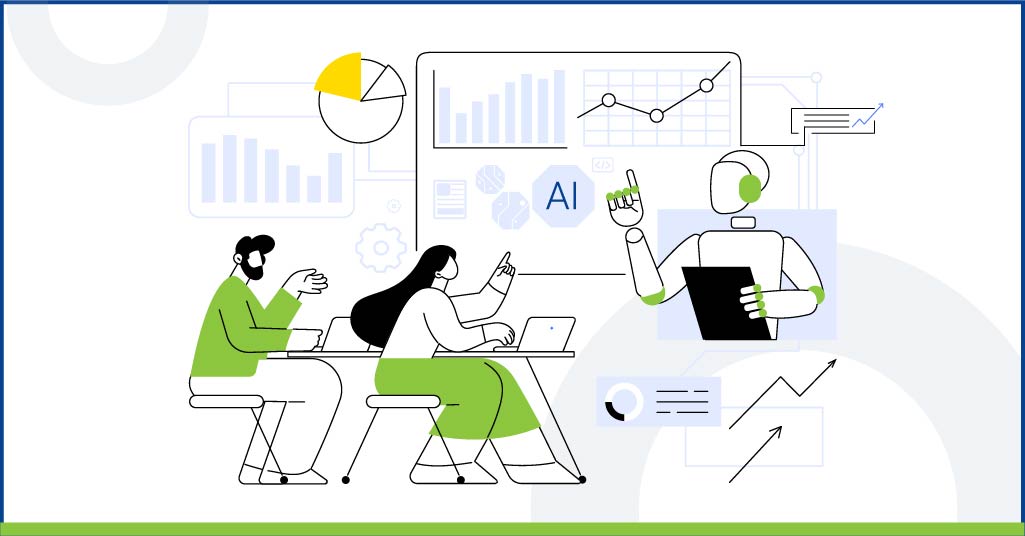Working from home has been fun, at least for some of us. Like Professor Robert Kelly being cutely interrupted by his children during his interview with BBC. Like when your cat decides to walk across the keyboard, right when you are in the middle of a global multi-chatting frenzy. Like when someone ignores this advice: If you and your husband are both working from home, check to see if he’s on a four-way video call BEFORE running past the office naked to get a towel from the linen closet.
While lighter moments are welcome, two sets of specialists are taking the new hybrid era very seriously. Human Resources (HR) and Learning & Development (L&D) have teamed up to steer modern business through the current choppy seas. They are doing their best to ensure that the organization has a stable team that is prepared to weather the next unanticipated upheaval, whether it involves a virus or not.
Learning takes the lead
Once upon a time, L&D was one of the many functions under the HR umbrella. Then dawned the realization that continuous learning was a business necessity. Came the pandemic and business is now scrambling to recruit, upskill, retain, and engage the team, with L&D at the helm. Organizations are now having to tackle several challenges including remote working, digital transformation, the great resignation, and issues of diversity, equity, and inclusion.
Before, one could count on a vibrant company culture to keep employees engaged. Now, with employees scattered across time zones and coping with connectivity problems, how does one even redefine culture? The senior, who was an expert in getting the best out of a machine or executing a critical task is now struggling with participating in a video call. How can they be kept engaged as they learn to coach remotely so that the organization can continue to gain from their experience?
It may be no panacea, but modern, digitalized learning is the way to stay alive and innovative. It is the way to stay ahead, even when one can’t be sure of the lay of the next lap.
Effective employee development
The seven ways that Keith Ferrazzi recommended some years ago to improve employee development hold good even today.
- Support and encourage managers to coach their team. More than bosses, we need mentors and facilitators today.
- Knowledge and skills are valuable but get obsolete fast. It is important to strike a balance between giving too much at one go and giving just what is needed now.
- Teach employees to take charge of their own learning, and provide personalized solutions to facilitate that without losing sight of the overall business goal.
- Make it possible for every employee to learn when it suits them best. On-demand, mobile solutions would be one obvious solution.
- With the office losing its fixed geographical co-ordinates, virtual members are part of the team too. In addition to online courses, they must have easy access to online mentoring and coaching.
- Want your subordinates to show some more interest in learning? Well, lead by example and become a perpetual learner!
- Be aware of the learners’ profile. Ensure learning is as palatable to the young who live by the mobile as to those who think the buttons are too small for their fingers.
It is obvious that learning has an important role in employee development. Not surprisingly, L&D also features prominently in Eric Friedman’s list of the top 10 HR to-do issues for 2022.
- Improve diversity, equity, and inclusion (DEI).
- Pave the way for remote, in-office, and hybrid work.
- Improve change management.
- Build critical skills.
- Equip future leaders who are empathy-driven and conscious of the needs of their subordinates.
- Find and nurture talent during a shortage.
- Provide great employee experiences.
- Identify skills employees will need going forward.
- Modernize training practices.
- Foster a healthy work environment (more so when everyone is not under the same roof).
Engaging learning, engaged employees
As “normal” remains in flux and new challenges pop up, there can be no progress without learning. Without engagement, there is neither learning nor learning transfer to facilitate performance. And therein lies a very real HR problem.
The lack of learning engagement can trigger a downward spiral. When learning slips, it dilutes employee experience (EX), and the entire organization can stagnate.
Andrea Boatman describes EX as an indicator of “how satisfied employees are with the full spectrum of their dealings with their employer, such as meaningful work, inclusive environment, or growth opportunities.”
Digital Employee Experience (DEX) is a subset of EX. DEX reflects “how effectively people interact with their workplace digital tools, which allows them to be engaged, proficient, and productive.”
In the typical modern organization, we have HR responsible for overall EX, IT for DEX, and L&D for learning experience (LEX). These are not silos but functions that share equal responsibility for the stability and success of business through continuous learning and learning-driven innovation.
According to Peter Hirst, Senior Associate Dean of Executive Education at the MIT Sloan School of Management, a culture of continuous learning is the mark of a healthy organization with engaged employees. “Research increasingly shows professional development is one of the top drivers of employee retention and a positive employee experience. Organizations that support continuous learning understand the enormity of the challenges their leaders are facing today and their need to be supported, connected, and empowered to lead.”
He is excited about the impact of digitalization on learning and, consequently, on employee engagement. “I think a big wave is building around the demand for well-designed, very engaging, live online, and asynchronously delivered experiences for professionals at all levels. I believe that we can deliver more compelling experiences virtually now than ever before. And some elements actually work better online.”
Learning is career development
For his book 1,001 Ways to Engage Employees Bob Nelson did a regression analysis of three million employee surveys and found that “the second-most significant driver of employee engagement is career development—that is, learning, development, and advancement opportunities that are provided to employees on a systematic basis. Career development isn’t an occasional training class or periodical promotions, but rather the daily journey of learning, job skills, and networking that puts employees on the course they most want to travel in their career—with their manager’s help in getting there.”
“Linking learning and career development to employee interests and aspirations is a simple yet powerful way to build employee engagement in your organization,” he affirmed.
Companies looking to tide over the Great Resignation, need to invest in long-term upskilling. “Upskilling is a longer-term investment in augmenting the knowledge, skills, and competencies that help employees advance their careers. When employees are offered and encouraged to take advantage of upskilling opportunities for their personal or professional growth, people metrics, such as employee engagement and retention, also go up.”
Three considerations are important as culled from the views of several HR and learning executives across industries:
- Empower employees to own their career development, supported by their managers and enabled by the company.
- Show where ideas go by providing feedback and sharing impact.
- Provide a road map so that employees can identify clear paths and milestones for performance measurement, going beyond promotions and designation changes.
The story goes that John F. Kennedy, on a tour of NASA headquarters in 1961 at the height of the space race, stopped to speak to a janitor who was mopping the floor. Kennedy asked what the man did at NASA. The man with the mop replied. “I’m helping to put a man on the moon.”
If a random employee can articulate (in person or over a call) your business mission that well, it is a good indicator of impactful learning and engaged employees.



















